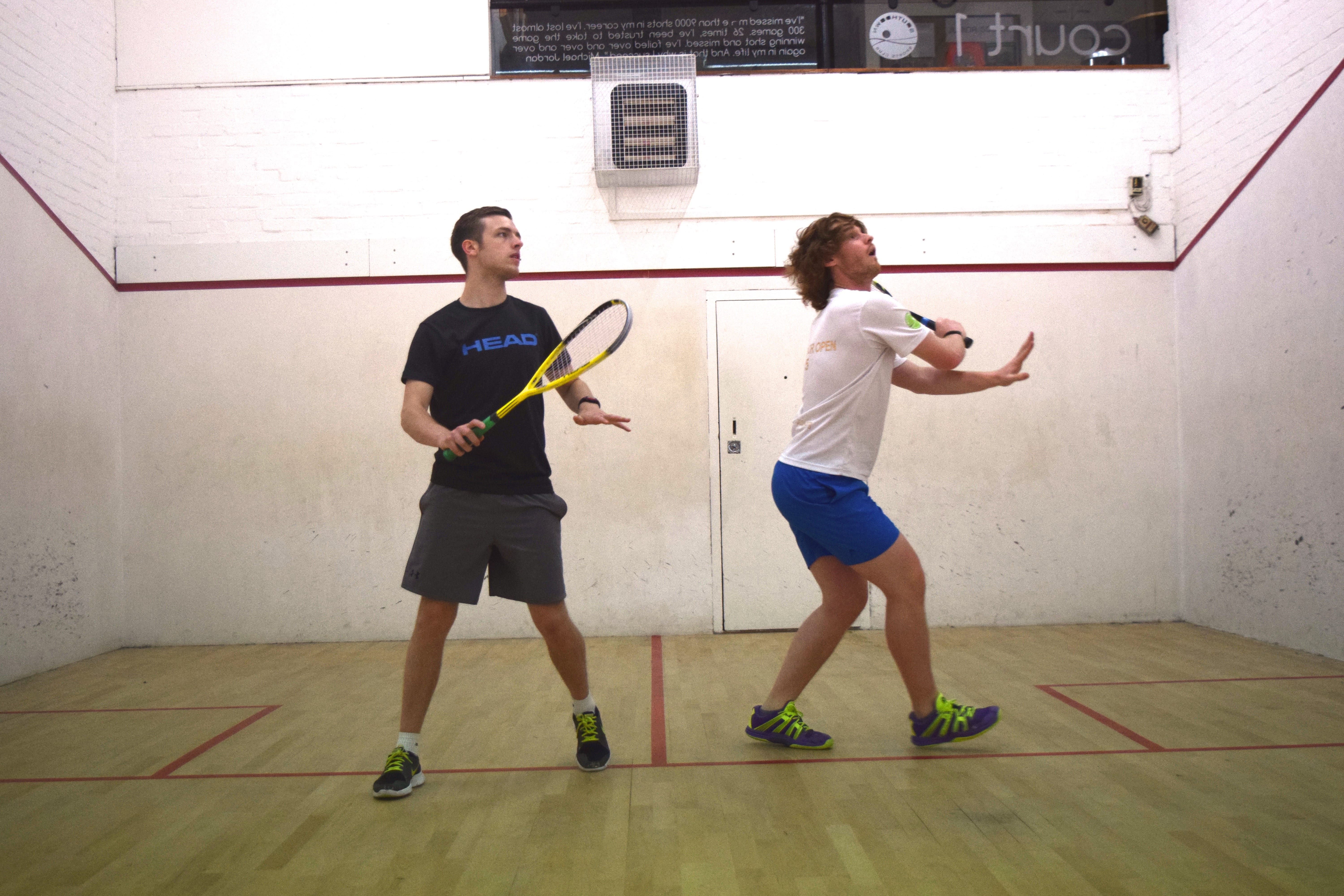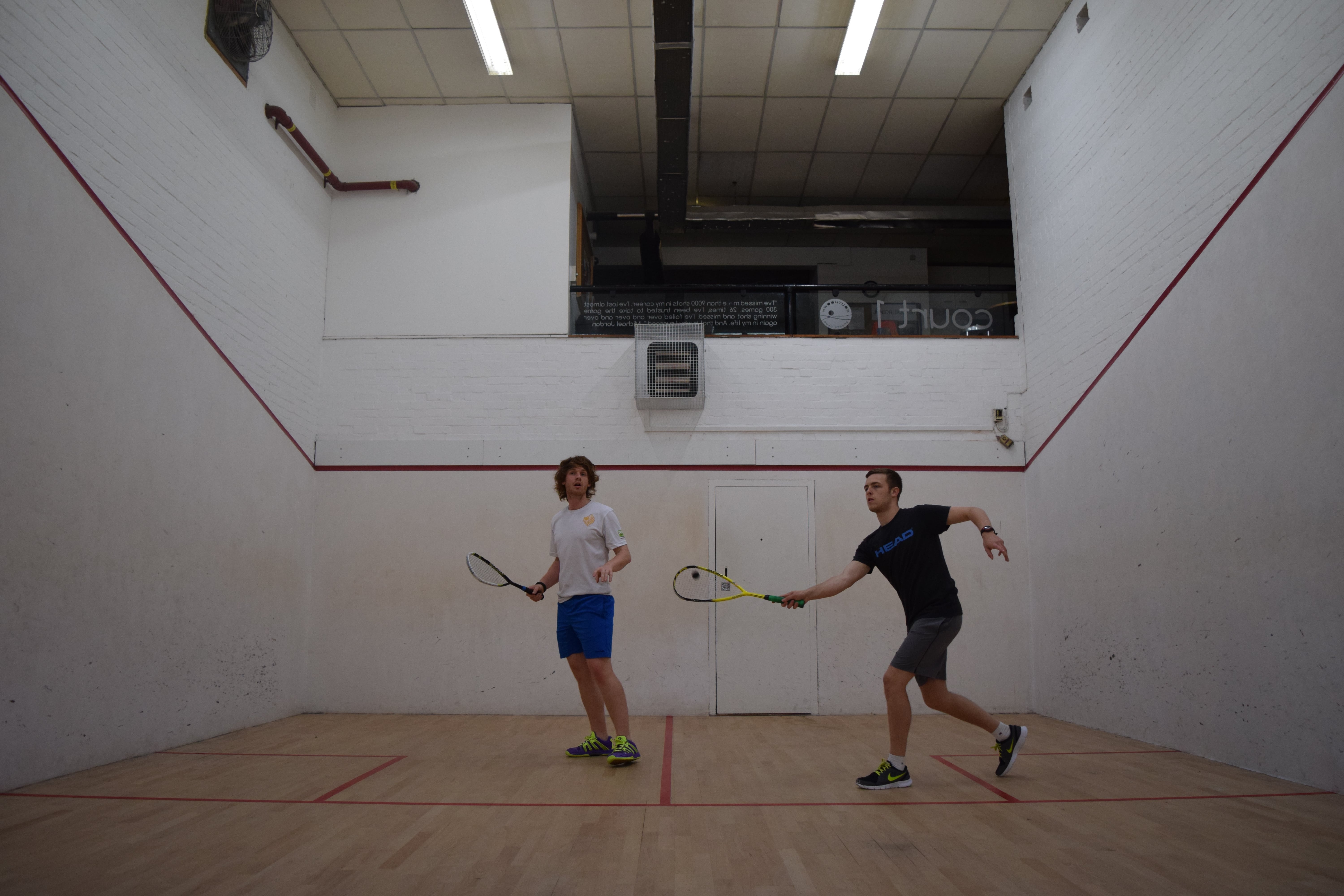How to take advantage of the colder weather and negate the disadvantages.
Following on from our blog about how you can adapt your game in warmer weather, we will now look at how you can make small alterations to your game to be effective on a cold court, which is very relevant with autumn underway and winter on the horizon.
Negating the disadvantages
Stepping higher up the court
One very important thing you’ll need to do is to step higher up the court. The ball won’t come off the back wall as much in cold weather – if at all – and so you need to make sure that you are in a position to intercept the ball before the back wall, or before it loses too much energy and starts to drop.
You’ll also be in a better position to take advantage of the increased number of volley opportunities, which come more frequently on colder courts as the ball comes off the front wall slower.
Volleying serves
As well as getting more opportunities around the middle of the court, you need to be looking to volley serves as a necessity as you cannot afford to let ball drop in the back corner. This is especially the case if you are returning a lob serve. Do your best to to stand higher up the court when returning serves and volleying as much as possible, because if you let the ball drop in the back corner, you’ll find your options very limited as the ball will have almost no energy on it. Additionally, you’ll have very little space to generate any energy with your swing. If you do find yourself in this situation you can check out our tips for using your feet to deal with such a situation here and your racket here.
Aiming higher up the front wall & opening the racket face more to get length
During cold weather you may find it harder to hit an accurate length when playing drives or lobs. Naturally, the colder weather can make the walls as cold as the ball which means your shots may not come back off the front wall as much as you would think. In order to ensure your length shots are still long enough to get into the back corners and force your opponent off of the T-Position, you may need to either aim higher on the front wall or open your racket face more than usual. You could of course try hitting the ball harder, but in cold weather this can have mixed success. Depending on the temperature, you may have to hit your normal straight drive at the very least one foot higher on the front wall than you would in warmer weather.
Rotating your forearm will help you to further open your racket face and will also help you with getting the angle for extra height on the front wall and more importantly, give you some cut. This cut will give the ball a bit of extra momentum off the front wall, helping the ball to come back slightly longer.
Taking advantage of the colder weather
Capitalising on drop shot (and two wall boast) opportunities
We’ve talked a lot about the negatives of a colder court, but of course it can have major advantages too – most notably when playing drops. In cold weather even the most average drop shot can become a winner because of how much the front wall slows down the ball and how much lower the ball bounces when it is cold. Therefore, it goes without saying that you should go for drop shots more often than you would normally in warmer weather, especially when in front. Just be wary of the counter drop though as that can be just as slow or slower than your original drop! You can cover this eventuality by taking very small backwards steps towards the T-Position – but not going all the way back – so you can change direction and push forwards again quickly. The slower ball off the front wall also means you do not need to get all the way back to the T-Position, as you’ll have a bit more time to react if your opponent does respond with a reasonable length shot, but also you will still be able to cover the counter drop if it comes.
Using lob serves and lobs
We’ve mentioned how you should aim to volley all lob serves without fail during such weather and you might also like to dish out some tricky lob serves. Like the rest of your long shots, you may need to hit the ball a bit harder, as well as higher, to achieve length and you might really need to open your racket face to get extra cut and the little bit of momentum this can bring to your shot.
For similar reasons, it might be very effective to play more lob shots from the front of the court, especially if you are able to disguise it as a drop shot and lure an opponent forwards into the front, leaving space at the back. With the ball dropping like it does in cold weather this can be an unstoppable outright winner.
LAST BUT NOT LEAST – Warm-up!
You really need to warm-up thoroughly. Even putting potential injuries to one side, you generally need to get down lower in winter as the ball is bouncing lower. This is very hard to do if you don’t warm up and it’s very hard to volley more and position yourself higher up the court if you’re cold.
We’ve written several detailed posts here at the Squash Company on how to warm-up properly including a series covering warming up yourself, your hitting, your racket speed and your mind, as well as a post on trying to ‘win’ the warm-up.
There you have it! Hopefully you will now have a fantastic winter season and dominate your boxes, leagues and friends! Additionally, for your enjoyment, you may wish to use a bouncier ball in winter. Check out our guide and our video on all of the different balls in squash and advice on which one is best for you and your circumstances.


Leave a Reply